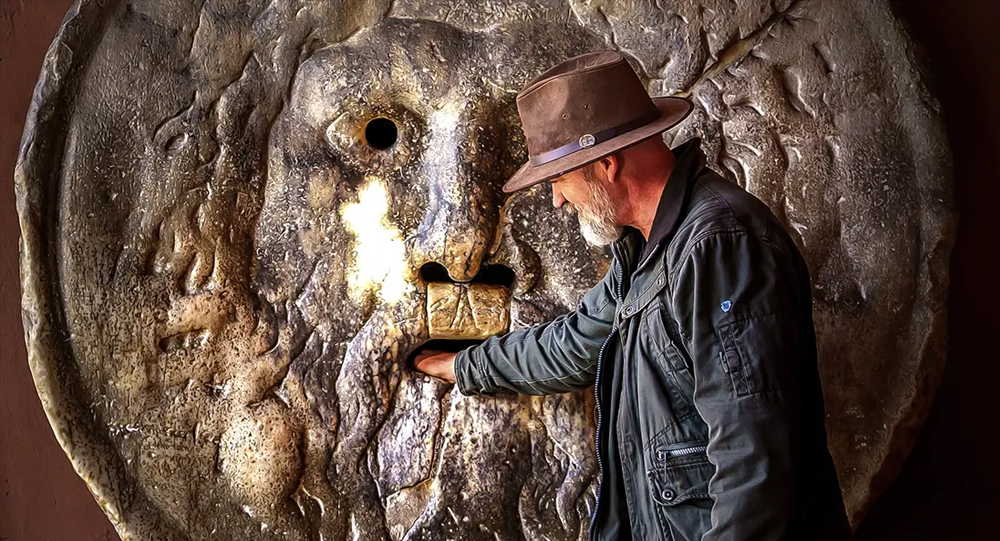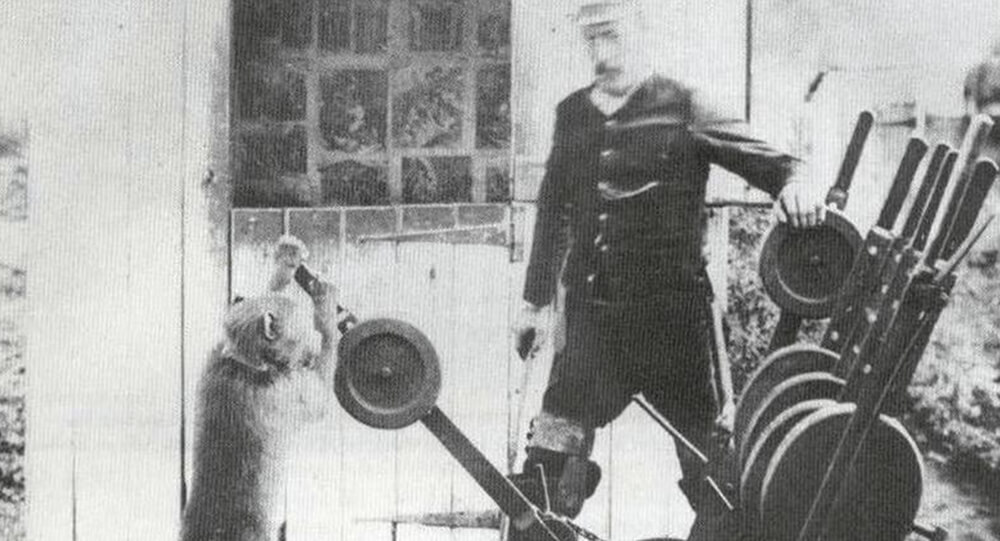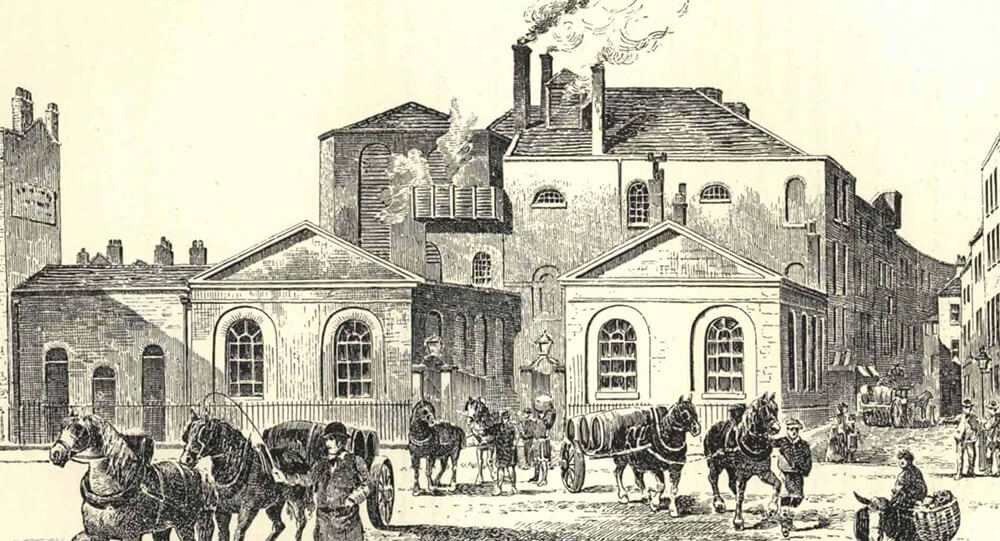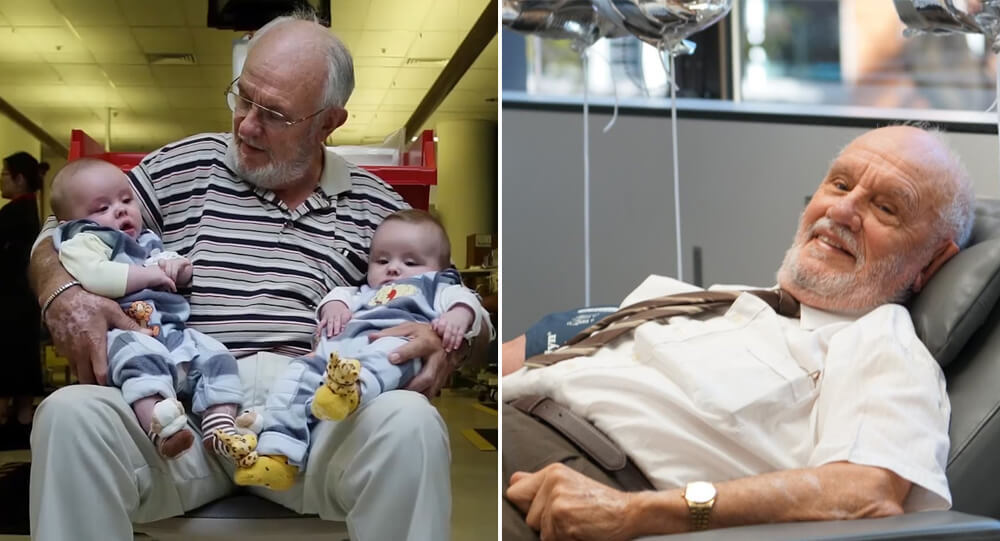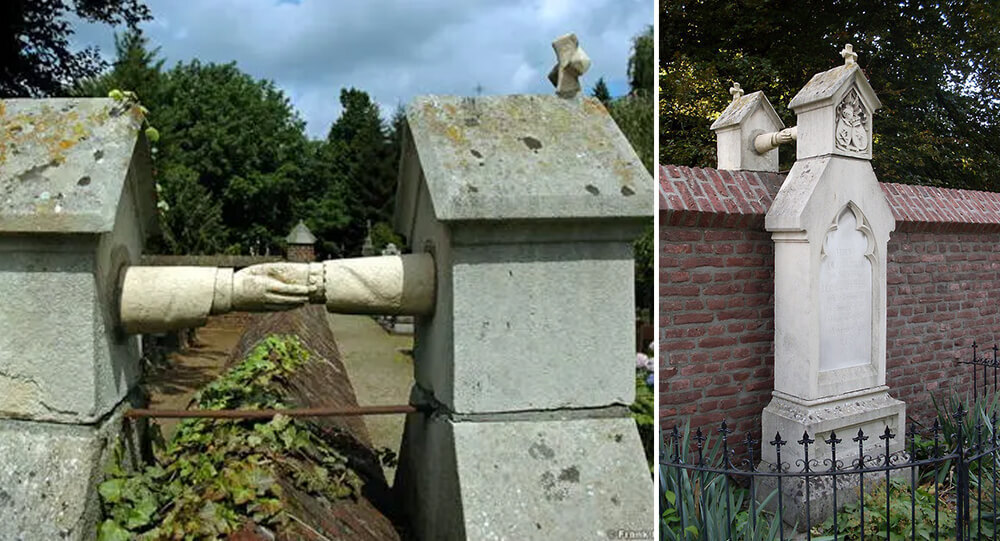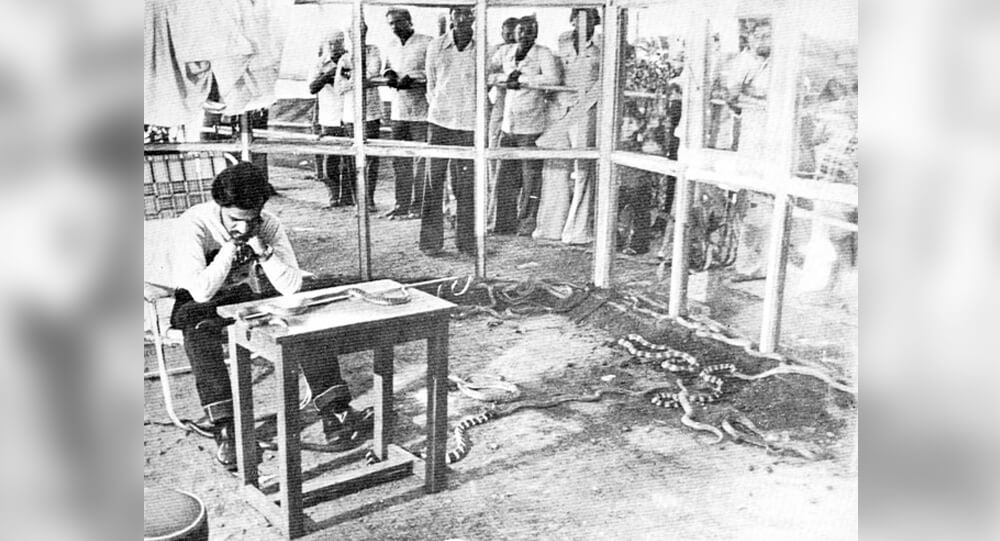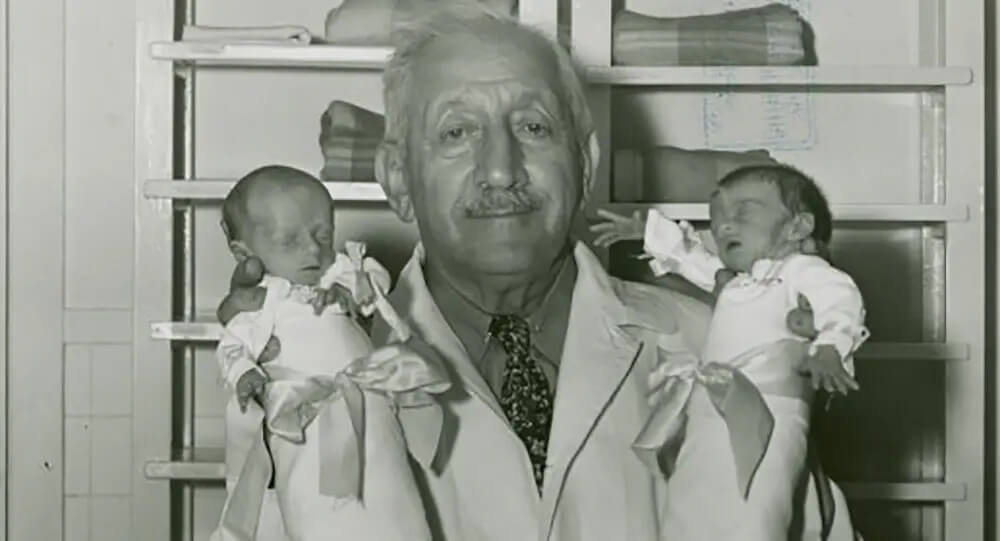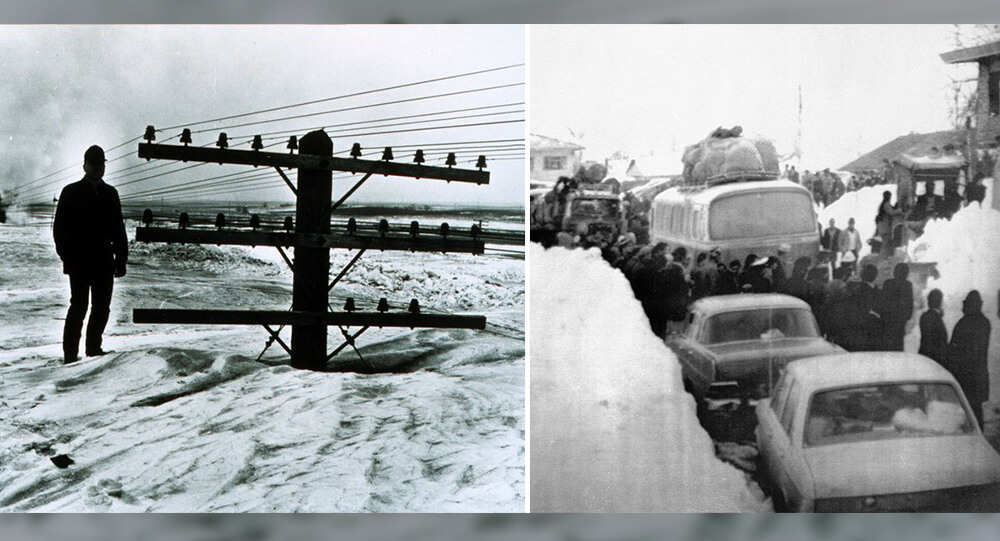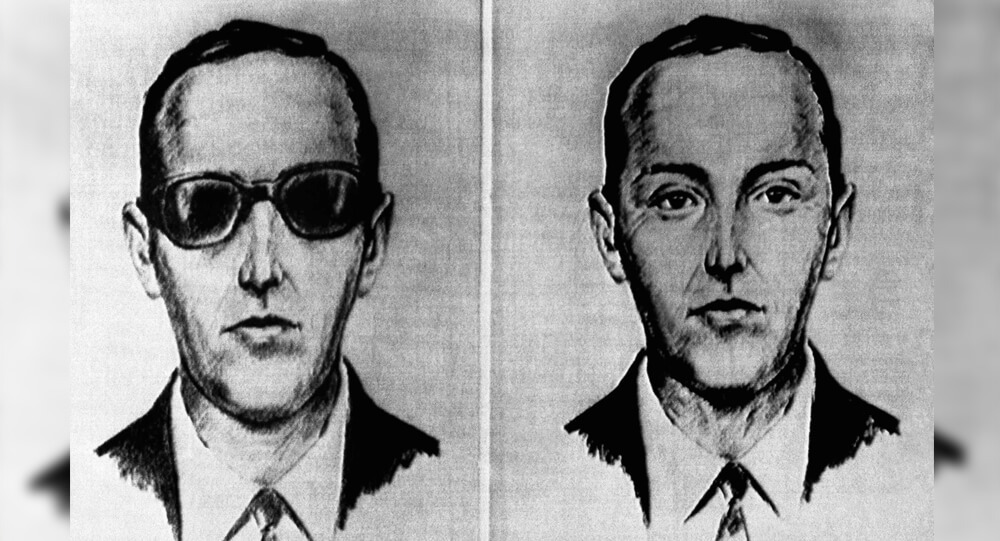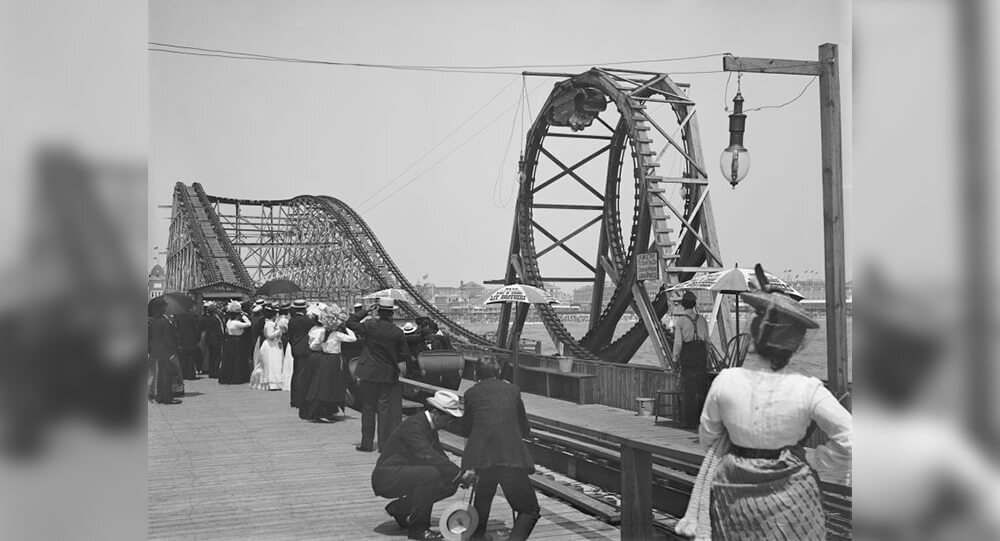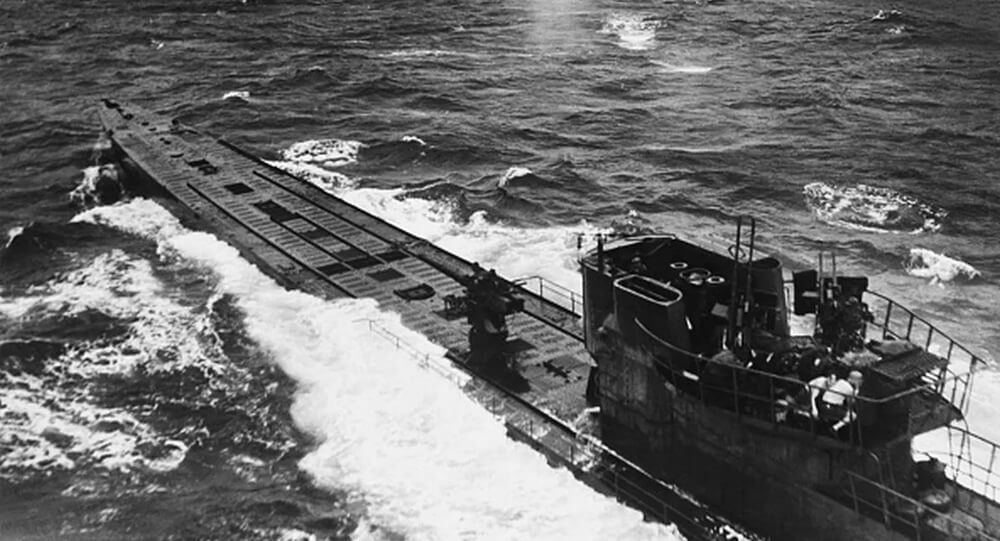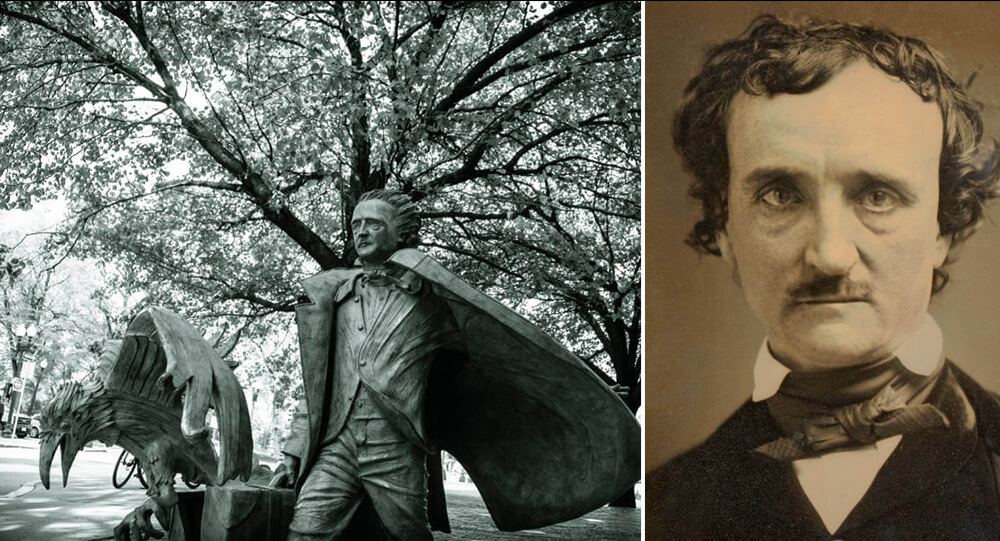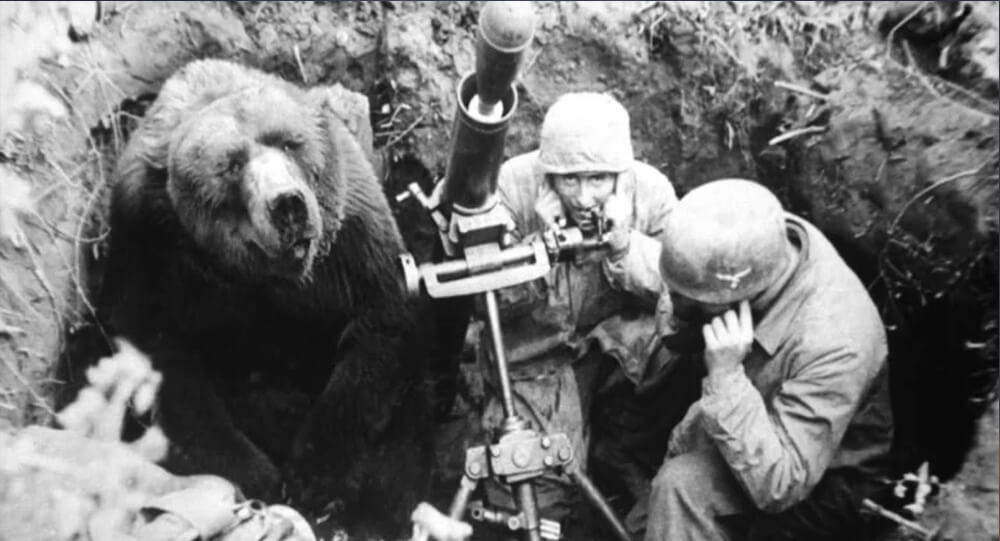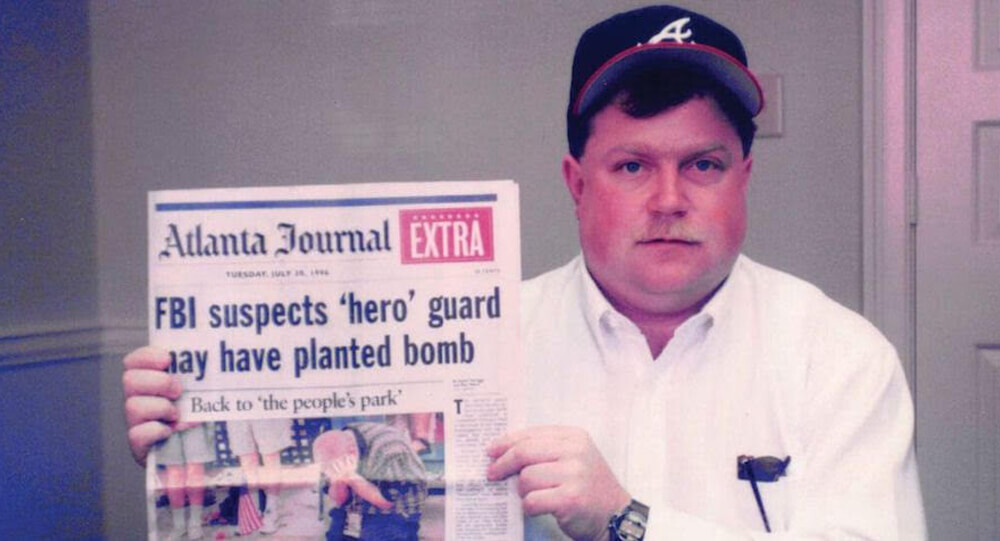

During the 1996 Olympic bombing, Richard Jewell falsely accused of committing the crime after saving dozens of people
On July 27, 1996, a security guard named Richard Jewell discovered a bomb in Atlanta’s Centennial Olympic Park during the Summer Olympics. Jewell’s quick thinking allowed him to evacuate dozens of people just before the bomb exploded, saving countless lives.
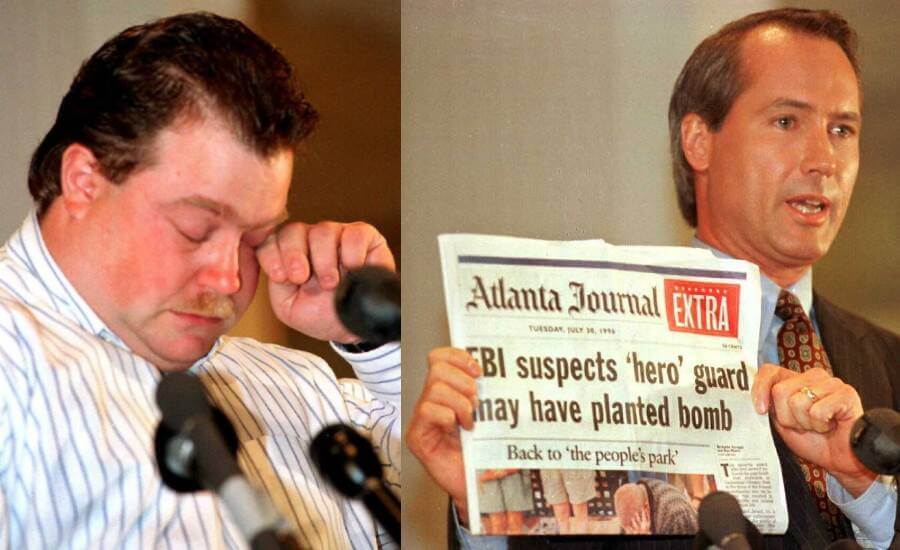
However, a few days later, news reports stated that Jewell had been designated as the FBI’s top suspect in the bombing. In the public eye, the hero quickly changed into the villain. From the Atlanta Journal-Constitution to CNN, media outlets from all over the nation painted Richard Jewell as a wannabe police officer who was so eager to play the hero that he was prepared to kill people for it.
Richard Jewell was never even formally charged with a crime, but for a torturous 88 days, everyone seemed to agree that he was guilty. In actuality, the FBI quickly gave up on Jewell’s case after realizing that he wasn’t the person they were looking for. And in 2005, a different man by the name of Eric Rudolph admitted to detonating the bomb.
Richard Jewell’s reputation was irreparably damaged, but it was too late. Later, the notorious case was examined in the 2019 film Richard Jewell. This Clint Eastwood-directed movie was made to serve as a warning about how hasty conclusions can lead to the death of an innocent person. The real account of Richard Jewell’s events, however, is even more tragic.
Richard Jewell: Who Was He?
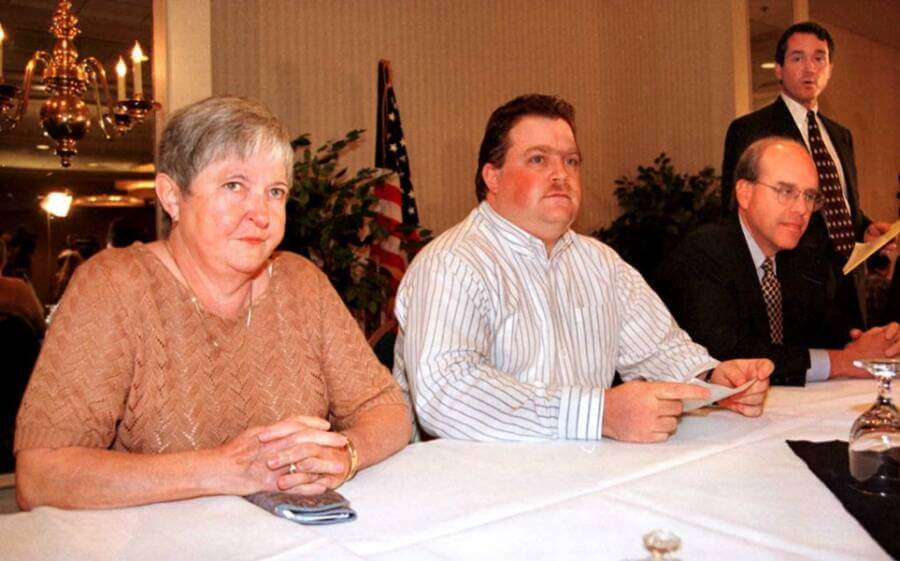
Prior to his ascent into the public eye, Richard Jewell lived a fairly ordinary life. On December 17, 1962, in Danville, Virginia, he was given the name Richard White. His mother, Bobi, brought him up in a strict Baptist family.
Richard’s mother left his philandering father when he was four years old and soon after married John Jewell, who raised Richard as his own son.
The family relocated to Atlanta, Georgia, when Richard Jewell was six years old. Even though Jewell had few friends as a young boy, he managed to stay busy on his own.
“I was a wannabe athlete, but I wasn’t good enough,” he admitted to Vanity Fair in 1997. He either volunteered at the school or assisted teachers when he wasn’t reading books about the World Wars.
After high school, he enrolled in a technical college in southern Georgia because he wanted to pursue his dream of becoming a car mechanic. However, Bobi learned about Jewell’s stepfather abandoning the family three days into the semester. Jewell left his new school in order to be with his mother.
After that, while continuing to live with his mother, he worked a variety of odd jobs, from running a neighborhood yogurt shop to serving as a jailer at the Habersham County Sheriff’s Office in northeastern Georgia.
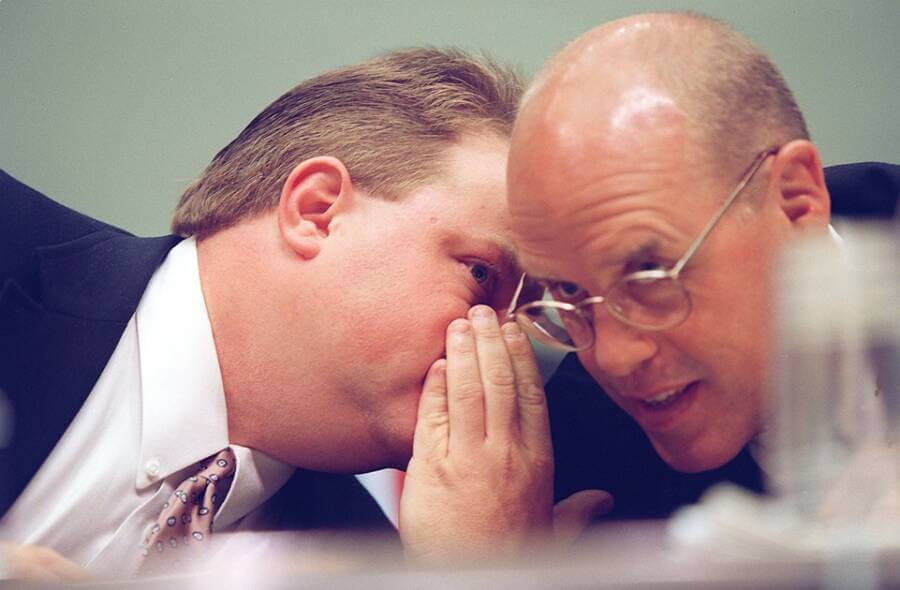
Soon enough, he began to consider joining the police. After serving as a jailer for a year, Richard Jewell was elevated to the position of deputy in 1991. He was also sent to the Northeast Georgia Police Academy as part of his training, where he graduated in the top 25% of his class.
Richard Jewell appeared to have discovered his vocation at that point.
“You must be aware that Richard Jewell is a police officer in order to comprehend him. During the Olympic bombing investigation, Jack Martin, one of Jewell’s attorneys, remarked that Jewell “talks like a cop and thinks like a cop.” Even after being mistreated by the FBI, Jewell’s dedication to upholding the law was evident in the way he spoke about matters relating to police work.
Jewell’s excessive passion occasionally put him in danger. He was even once detained for pretending to be a police officer and put on probation with the requirement that he get counseling. Jewell left the sheriff’s office and took a job as a police officer at Piedmont College after wrecking his patrol car and being relegated to the position of a jailer.
Conflict arose between Jewell and the school’s administrators as a result of her harsh student policing methods. Officials from the school claim that he was ultimately pressured into leaving his position. In a cruel irony, Jewell’s admiration for law enforcement was later portrayed as obsessional, suggesting that he might resort to drastic measures in an effort to gain attention.
Richard Jewell’s Valor in the 1996 Olympic Park Bombing
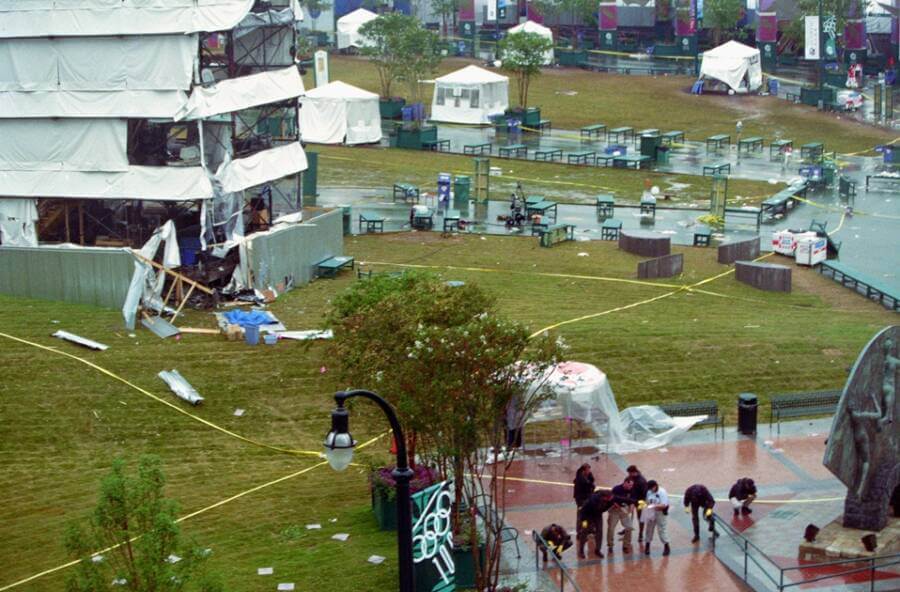
Jewell reasoned that there was probably a security job waiting for him at the 1996 Summer Olympics in Atlanta given all the publicity surrounding them.
Since his mother, who still lived in Atlanta, was preparing to have foot surgery, it seemed like the perfect opportunity. And in the end, Jewell was hired to work the 12-hour night shift as one of the security officers. He had no idea that his new job would soon cause chaos in his life.
He reportedly left his mother’s home for the Olympic Park at 4:45 p.m. on July 26, 1996, according to Jewell. and 45 minutes later arrived at the AT&T pavilion. Around ten o’clock he stopped to use the restroom.
Jewell noticed a group of inebriated people littering all over the sound-and-light tower by a music venue when he returned to his station nearby. He later admitted to being irritated with the group because they had made a mess and were bothering the camera crew to an FBI agent.

As the vigilante he was, Jewell went right away to report the drunk litterbugs. But on the way, he noticed a military-style backpack in an olive green color that had been abandoned under a bench. He initially didn’t give it much thought and even made light of the bag’s contents with Tom Davis, an investigator with the Georgia Bureau of Investigation (GBI).
“Well, I am sure one of these people left it on the ground,” Jewell said as she reflected. The little hairs on the back of my head started to stand up when Davis returned and said, “Nobody said it was theirs.” “Oh no,” I thought. This is not a good thing.
Jewell and Davis swiftly ordered onlookers away from the vicinity of the mysterious backpack. In addition, Jewell made two trips up into the tower to alert and then evacuated the technicians.
approximately 1:30 a.m. The backpack exploded on July 27, 1996, scattering shrapnel onto the crowds of onlookers nearby. Investigators discovered that the attacker had inserted nails inside a pipe bomb, a menacing device designed to cause the greatest amount of damage, after the attack.
Why Did Many People Believe Richard Jewell Was Guilty?

Soon after the explosion, federal agents flooded Atlanta’s Centennial Olympic Park. Even a year later, Richard Jewell, who spoke with the first agents to arrive at the park, had a clear memory of the chaotic scene that followed the bomb’s explosion.
It sounded just like what you hear in movies. In a 1997 interview, Jewell remarked, “It was like kaboom. “All of the shrapnel that was inside the package kept flying around, and some of the people got hit from the bench and some with metal.”
According to later reports, dispatchers were alerted to the threat by a 911 call from a nearby phone booth that said, “There is a bomb in Centennial Park. It was probably the bomber who said, “You have 30 minutes.”
One woman was killed and 111 people were injured in the Centennial Olympic Park explosion; a cameraman also passed away from a heart attack while trying to capture the event. However, the number of fatalities could have easily been much higher if Richard Jewell hadn’t partially evacuated the area.
Richard Jewell was immediately hailed as a hero by the media after they learned about his discovery of the bag and the action he took to evacuate the crowd.
However, his notoriety quickly faded after the Atlanta Journal-Constitution ran a front-page article with the headline “FBI Suspects ‘Hero’ Guard May Have Planted Bomb,” which implied Richard Jewell might have been responsible for organizing the attack in the first place.
The newspaper’s police reporter, Kathy Scruggs, reportedly received information about Richard Jewell’s potential involvement in the bombing investigation from a friend who works for the federal bureau. Another source who was affiliated with the Atlanta police confirmed the tip.
The most damaging part of the article was one sentence: “Richard Jewell… fits the profile of the lone bomber,” which was printed despite neither the FBI nor experts in criminal behavior making any public statements. Other news organizations that covered the bombshell story described Jewell in a similar manner, portraying him as a one-man bomber and wannabe police officer.
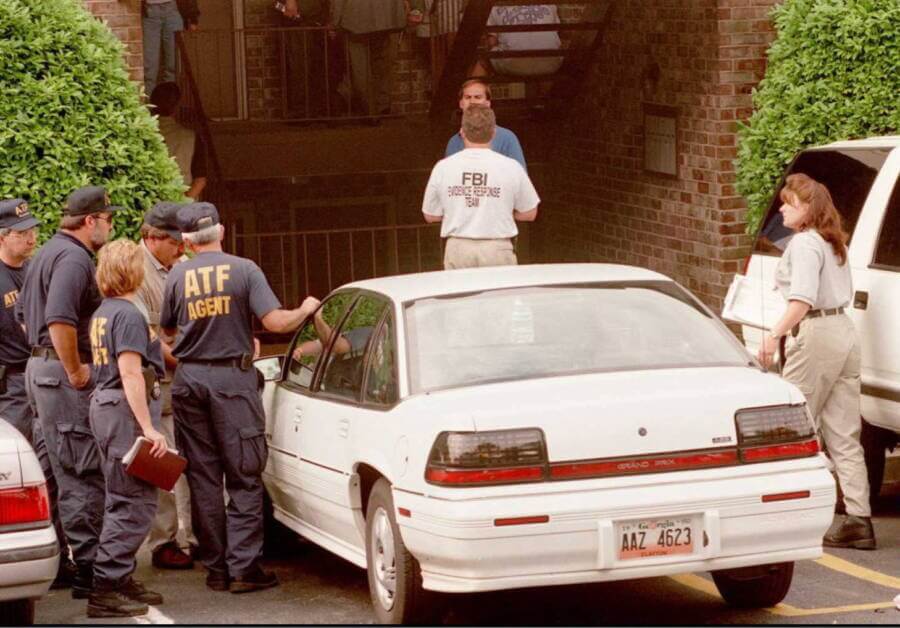
“They were talking about a hero bomber’s FBI profile, and I was like, ‘What FBI profile?The late Robert Ressler, a former FBI agent from the Behavioral Science Unit who interrogated notorious murderers like Ted Bundy and Jeffrey Dahmer during his career, said, “It rather surprised me.
The “hero bomber” profile does not exist, according to Ressler, who co-wrote the Crime Classification Manual used by the FBI.
Ressler had a sneaking suspicion that the phrase was a bombastic take on “hero homicide,” which describes a person who craves attention but wouldn’t kill anyone.
He and his mother were the subject of a media frenzy for 88 days after the FBI’s investigation into Richard Jewell was reported. News vans staked out in front of his mother’s apartment as investigators searched it and brought Jewell inside for questioning.
The United States announced in October 1996 that Richard Jewell could not have detonated the bomb based on his whereabouts that evening. He was formally exonerated by the Justice Department of being a suspect in the Centennial Park bombing investigation. However, his reputation had already been irreparably harmed.
You don’t revert to your original state, Jewell said. “I seriously doubt I’ll ever get that back. I was supposed to be their hero during the first three days—the one who saves lives. They no longer refer to me in that way. I now stand accused of bombing Olympic Park. They believed that individual was responsible.
The Aftermath Of A Tumultuous “Trial By Media”

The incident involving Richard Jewell has become a case study in careless FBI investigation and careless press reporting.
According to one of Jewell’s lawyers, Watson Bryant, “this case has everything — the FBI, the press, the violation of the Bill of Rights, from the First to the Sixth Amendment.”
A phone call from Jewell’s former employer, Piedmont College President Ray Cleere, who informed the FBI about the security guard’s alleged overzealousness and his forcible departure from the school, served as a catalyst for the investigation into Jewell’s innocence. However, aside from the bureau, no one else can be made to answer for the investigation’s poor management.
One year after the bombing, a Vanity Fair story exposed tensions within the organization brought on by toxic rivalries and micromanaging leadership, particularly from then-FBI Director Louis Freeh. Due to the FBI’s handling of the case, an investigation was launched, and Richard Jewell was requested to testify at congressional hearings regarding the bureau’s actions.
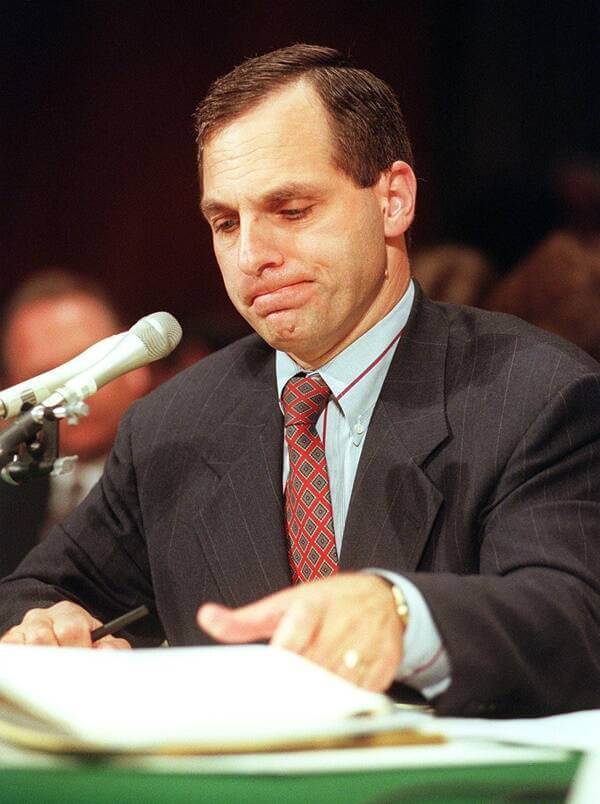
Then it became known that Richard Jewell had been questioned by FBI agents who were directly involved in the bombing case under false pretenses as a suspect. Under the pretense of working with them to create a training video for first responders, FBI agents Don Johnson and Diader Rosario brought Jewell to the agency’s headquarters on July 30, 1996, where she was questioned.
Reexaminations of the case-related reporting also uncovered terrible reporting errors. Despite the lack of supporting evidence, the tone of the reporting implied that Richard Jewell was guilty and portrayed him as a fame-obsessed wannabe hero.
He was referred to in the New York Post as “a Village Rambo” and “a fat, failed former sheriff’s deputy.” Jay Leno said that Jewell “had a scary resemblance to the guy who whacked Nancy Kerrigan,” and questioned, “What is it about the Olympic Games that brings out big fat stupid guys?”
According to Dave Kindred, a columnist for the Atlanta Journal-Constitution, Richard Jewell was drawn to the blue lights and sirens of police activity, just like Wayne Williams, who was convicted of murder and is suspected of killing multiple children. He also rose to fame after a murder, like this one.
What happened to Richard Jewell? His tragically early death and settlements with media outlets
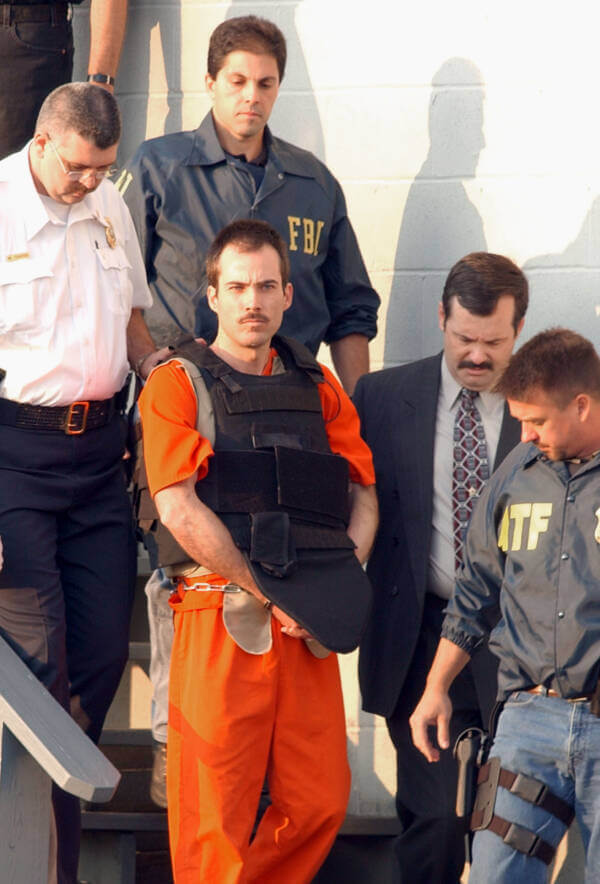
Following an investigation, Richard Jewell filed libel suits against several media organizations and was successful in obtaining settlements from Piedmont College, the New York Post, CNN, and NBC (the latter for an alleged $500,000). He did, however, lose a 10-year battle with Cox Enterprises, the Atlanta newspaper’s parent company.
After Richard Jewell passed away in 2007, the libel case against the Journal-Constitution persisted for years and even reached the Georgia Supreme Court. However, the Court ultimately decided that the newspaper owed Jewell and his family nothing because its reporting was accurate at the time of publication—that is, that he was in fact an FBI suspect in the days following the bombing.
However, Richard Jewell lost two significant things that no amount of settlements could ever bring them back for him: his dignity and peace.
After the Justice Department exonerated him of the bombing, he broke down in tears and said, “I hope and pray that no one else is ever subjected to the pain and the ordeal that I have gone through.”
“The government should be mindful of citizen rights. I’m grateful that it’s over and that you now understand what I already knew: I’m an innocent man.
The real bomber, Eric Rudolph, admitted responsibility for the attack as well as three other bombings in 2005, years after Richard Jewell was cleared of all charges. Sadly, Richard Jewell passed away only two years later.
Richard Jewell passed away on August 29, 2007, as a result of complications from diabetes and heart disease. He was only 44, so after the bombing and the ensuing media frenzy upended his life, he had very little time to enjoy it.

How Sleep Deprivation Was Once Used as Torture
Sleep deprivation, long before modern interrogation techniques, was considered a “clean” and effective form of torture—leaving no physical scars, yet breaking minds with haunting silence. Victims endured days and nights without rest, leading to vivid hallucinations, disorientation, and psychological torment. This article traces the dark history of sleep deprivation as a weapon, examines the science behind its effects on the brain, and shines a light on the painful balance between human endurance and cruelty in the annals of coercion.

The Mouth of Truth: Ancient Rome’s Legendary "Lie Detector" That Bit Off Hands
Discover the chilling legend of the Mouth of Truth (Bocca della Verità) in Ancient Rome—a massive carved stone face believed to bite off the hand of anyone who lied while inserting their hand into its gaping mouth. Uncover the truth behind its eerie reputation and how this ancient artifact became a symbol of honesty and fear.

Jack the Baboon operated a railroad, earned a living, and never made a mistake
A baboon worked as a signalman for the railroad in the late 1800s. He never made a mistake and worked for the railroad until the day he died.

The 1814 London beer flood
In 1814, there was a beer flood in London when a tank containing more than 300,000 gallons ruptured in which 8 people drowned.

Reason Behind The Suicide Of Christine Chubbuck Live On Air
Actor Rebecca Hall had serious reservations about tackling the macabre story around why Chubbuck killed herself in 1974. So what changed her mind?

The incredible story of a plane that lost its roof in mid-flight and the light signal that saved 94 lives.
On April 28, 1988, Aloha Airlines flight 243 was on the way to Honolulu from Hilo when a huge portion of the upper part of the fuselage blew off the airplane.

Man's Blood Helped Save Millions of Babies
Australian blood donor James Harrison has been one of our most impressive and valued donors, having donated for 60 years. Know his story, how he was a pioneer of our Anti-D program, and why this matters.

Mother who spent entire life savings for daughter’s cancer treatment won the lottery
A mother won $2 million from a $10 scratch-off lottery ticket after she spent all of her entire life savings to pay her daughter’s cancer treatment. She bought the winning ticket after her daughter’s last cancer treatment.

Graves holding hands over wall, A Catholic woman and her Protestant husband grave
A protestant man and a Catholic woman who weren't allowed from being buried together in a graveyard in 19th-century Holland turned their graves into a monument showing them holding hands across the wall separating them.

The story of a man who spent 72 hours with 72 venomous snakes to prove they only bite when provoked
In the 1980s, an Indian man spent 72 hours in a glass cabin with 72 snakes, some of which were extremely venomous. His aim was to prove that snakes only attack when provoked. Remarkably, he was not bitten once in those 72 hours and even set a Guinness World Record in the process.

The Arabia Steamboat: Unearthing a 19th Century Time Capsule from the Missouri River
The Arabia was a steamboat that sank in the Missouri River in 1856. Over time, the river shifted 800 meters to the east, eventually turning the site of the sinking into a field. The steamboat remained under 45 feet of slit and topsoil until 1988, when it was excavated. The mud, as it turned out, was such a great preserver that most of the artifacts on board were found to be intact. They even found jars of preserved apples that were still edible!

The Baltic Way: the longest unbroken human chain in history
On August 23, 1989, about 2 million people from Latvia, Estonia, and Lithuania formed a human chain that united all 3 countries to show the world their desire to escape the Soviet Union and the communism that brought only suffering and poverty. This power stretched 600 km.

Martin Couney, Saved Thousands of Premature Babies Wasn’t a Doctor at All
Martin Couney never qualified as a medical doctor. However, in the 1900s, he saved thousands of premature babies by exhibiting them in incubators at his Coney Island sideshow. Over the course of his career, he is said to have saved about 6,500 babies that had previously been written off by mainstream medicine.

Marion Stokes recorded 30 years of television
Marion Stokes, a Philadelphia woman began taping whatever was on television in 1979 and didn’t stop until her death in 2012. The 71,000 VHS and Betamax tapes she made are the most complete collection preserving this era of TV. They are being digitized by the Internet Archive.

Remembering the miracles of the 1985 Mexico earthquake (unbelievable stories)
In 1985, after an 8.0 magnitude earthquake hit Mexico City, nearly all newborn babies survived a collapsed hospital. They are known as “Miracle Babies” for surviving 7 days without nourishment, water, warmth or human contact.

15 interesting facts about Queen Elizabeth II
Queen Elizabeth II, who ruled Britain for 70 years, has away at the age of 96. She was the country's longest-reigning monarch. Here are some little-known facts about her.

The worst blizzard in recorded history: the 1972 Iran blizzard
The deadliest snowstorm ever recorded occurred in Iran in 1972. It lasted for a week, burying areas in 26 feet of snow and killing over 4,000 people, including the entire populations of three villages.

10 world’s most destructive and dangerous volcanic eruptions in history
Volcanic eruptions can devastate cities, change the world's atmosphere, and devastate economic systems. They can create molten lava rivers, mudslides, suffocating ash, and poisonous gases that cause chaos around the world for years. A volcanic explosion's effects can be massive, from its size to its death toll to its economic cost. Here is ten world’s most destructive and dangerous volcanic eruptions in history.

D.B. Cooper: Man who hijacked a plane and jumped out with a $200,000
On November 22, 1971, DB Cooper hijacked a Boeing 727, drank a whisky, smoked a fag, and then jumped out of the plane with $200,000. He was never again seen.

Roller Coasters were First Invented to Distract People from sin
Roller coasters were invented to distract Americans from sin. In the 1880s, hosiery businessman LaMarcus Thompson didn’t like that Americans were going to places like saloons and brothels and created the first roller coaster on Coney Island to persuade them to go there instead.

The Amazing Truth About The German U-Boat That Was Sunk By A Toilet
During WWII, a German captain and an engineer flushed the submarine's high-tech toilet incorrectly, causing the vessel to rapidly fill with water. British planes patrolling the sea attacked them as the submarine was brought to the surface. While many members of the crew were killed in the attack, the captain escaped!

Inside The Mysterious Death Of The Famed Gothic Writer Edgar Allan Poe
Hours before his death Edgar Allen Poe was found on the streets of Baltimore. He was incoherent, wearing another man’s clothes, and unable to explain how he got there. The cause of his death is an unsolved mystery.

George Dantzig solved two famous “unsolved” problems in statistics mistakenly as assignment
In 1939, George Dantzig arrived late to his statistics class. On the board were two famous “unsolved” problems in statistics written as an example by his professor. Dantzig mistook the examples for homework assignments. He solved the “unsolved” problems and submitted the homework to his professor a few days later. His solutions earned him a doctorate.

Juliane Koepcke: The Teenager Who Fell 10,000 Feet And Trekked The Jungle to survive
In 1971, a high school student was sucked out of an airplane after it was struck by lightning. She fell 10,000 feet to the ground while still strapped to her chair and survived. Only to endure a 9-day trek to the nearest civilization.

The 440-pound bear named Wojtek and his World War II battle against the Nazis
Polish troops raised an orphaned bear cub during WWII. He enjoyed drinking beer, and was trained to salute. He became officially enlisted as a member of the forces, and helped carry artillery during battle.


